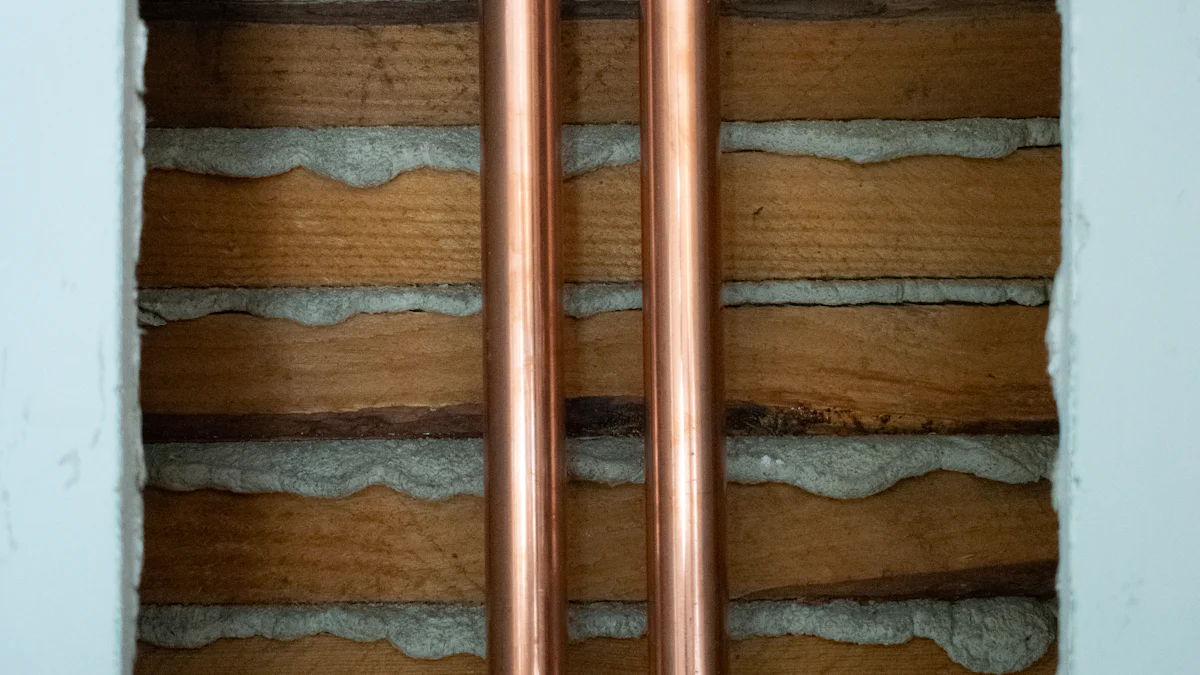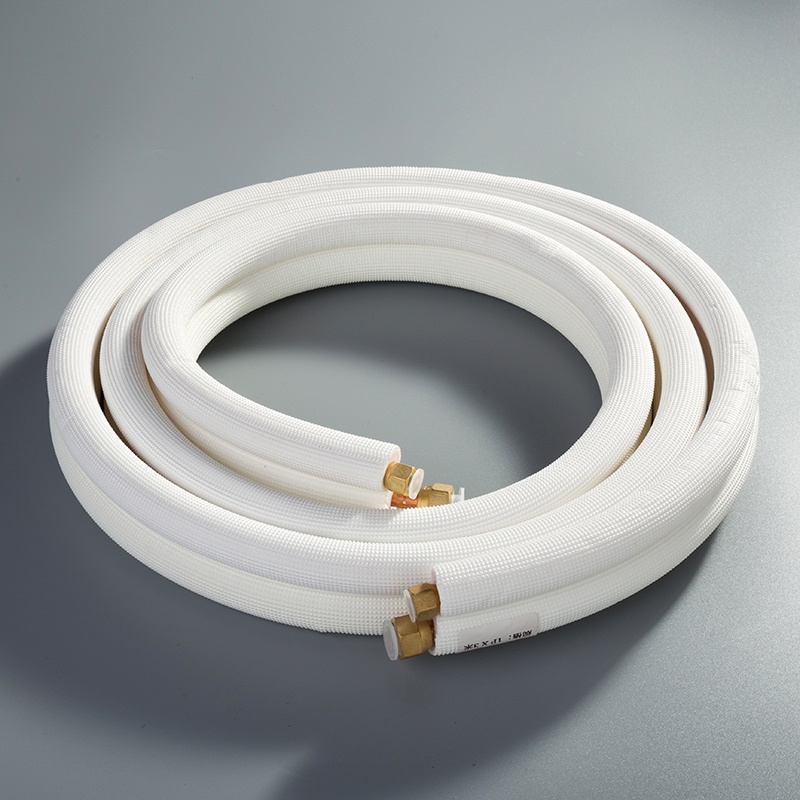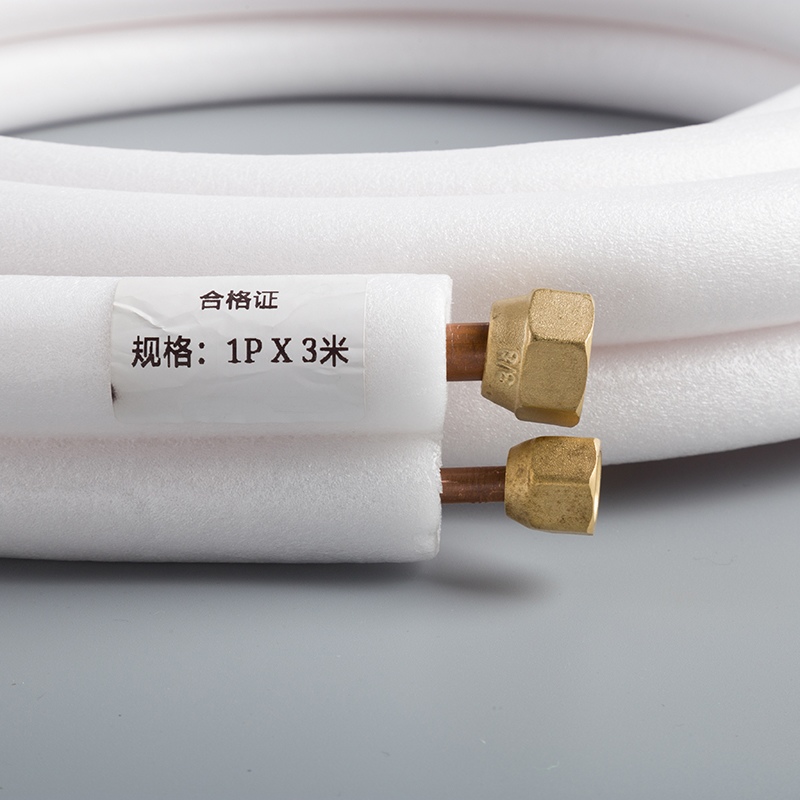Top 5 Insulation Types for Copper Pipes You Need to Know

Insulating copper pipes is crucial for maintaining energy efficiency and preventing potential damage. Understanding the top five insulation for copper pipes types is essential to make informed decisions. Proper insulation for copper pipes not only reduces heat loss but also minimizes condensation buildup, leading to cost savings and improved system performance.
Foam Insulation

Foam insulation is a versatile option for copper pipes due to its excellent thermal properties and ease of installation. It is highly recommended for both residential and commercial use, providing efficient protection against heat loss and condensation. Compatibility with copper pipes is a key advantage of foam insulation, ensuring a snug fit that maximizes energy efficiency.
In industrial settings, foam insulation offers significant benefits, such as preventing fires and maintaining safe temperatures in warehouses. This type of insulation also safeguards against rust formation on pipes, extending their lifespan. For instance, Armaflex Pipe Insulation is a renowned choice known for its durability and impermeability to water, essential qualities for preserving the integrity of copper pipes.
Foam pipe insulation like Aflex-Eco Nitrile Insulation Foam is specifically designed for AC Copper Pipe Insulation, offering various wall thicknesses to accommodate different pipe diameters. Its closed-cell elastomeric foam structure ensures optimal coverage and protection for copper pipes, making it an ideal solution in the air conditioning industry.
Polyethylene Foam
Polyethylene foam is a top choice for insulation for copper pipes due to its high efficiency and durability. This type of foam offers exceptional thermal insulation properties, ensuring that copper pipes maintain optimal temperatures. Its lightweight nature makes it easy to handle and install, providing a hassle-free solution for copper pipe insulation needs.
Benefits
High Efficiency: Polyethylene foam excels in providing superior thermal insulation, reducing heat loss significantly.
Durability: The closed-cell structure of polyethylene foam enhances its longevity, making it a reliable option for long-term use.
Applications
Commonly Used for Copper Pipes: Polyethylene foam is widely utilized in various industries, including HVAC systems and plumbing, where copper pipes require efficient insulation.
Insulation for Copper Pipes
Easy Installation: Installing polyethylene foam on copper pipes is a straightforward process that does not require specialized tools or skills. Its flexibility allows for seamless wrapping around the pipes, ensuring complete coverage.
Fiberglass Insulation

When considering insulation for copper pipes, Fiberglass Insulation stands out as a reliable choice due to its versatility and effectiveness. This type of insulation is known for its adaptability to various pipe temperatures, making it suitable for both cold and warm pipes. With high thermal resistance, fiberglass insulation ensures that copper pipes maintain consistent temperatures, reducing energy loss and enhancing overall system efficiency.
In both industrial and residential settings, Fiberglass Insulation finds extensive applications. It is commonly used in factories, warehouses, and homes to provide optimal thermal protection for piping systems. The cost-effectiveness of this insulation type makes it a practical solution for those looking to enhance energy efficiency without compromising on quality.
Thermal performance of fiberglass and cellulose attic insulations
The study highlights the superior thermal properties of fiberglass insulation compared to other materials.
Results indicate that fiberglass insulation effectively reduces heat transfer in various environmental conditions.
XLPE Insulation
XLPE Insulation offers exceptional benefits for copper pipes, making it a versatile choice for various applications. Its excellent thermal properties ensure efficient temperature maintenance, while its moisture resistance protects against environmental factors that could compromise the integrity of the pipes.
Benefits
Excellent Thermal Properties
XLPE Insulation provides superior thermal resistance, suitable for both high and low temperatures.
This feature ensures that copper pipes maintain consistent heat levels, optimizing energy efficiency.
Moisture Resistance
The moisture-resistant nature of XLPE Insulation safeguards copper pipes from potential damage caused by water exposure.
This protective quality enhances the longevity of the insulation and prevents corrosion issues in piping systems.
Applications
Use in Air Conditioning Industry
XLPE Insulation is commonly utilized in the air conditioning industry to insulate copper pipes effectively.
Its versatility allows for seamless application on a wide range of pipe diameters, providing comprehensive coverage.
Insulation for Copper Pipes
Versatility
The adaptability of XLPE Insulation makes it a practical solution for various insulation needs in different industries.
Whether used in residential or industrial settings, this type of insulation ensures optimal performance and long-lasting protection for copper pipes.
Rubber Insulation
Rubber insulation is a versatile choice for copper pipes, offering significant benefits in terms of flexibility and durability. Its ability to withstand varying temperatures makes it an ideal solution for ensuring optimal performance and longevity of piping systems.
Benefits
Flexibility
Rubber insulation provides exceptional flexibility, allowing it to adapt to different pipe shapes and sizes seamlessly. This characteristic ensures a snug fit around copper pipes, minimizing heat loss and maintaining energy efficiency.
Durability
The durable nature of rubber insulation enhances its resistance to wear and tear, making it a long-lasting option for copper pipes. This durability translates to cost savings over time, as the need for frequent replacements is reduced.
Applications
Suitable for Various Pipe Materials
Rubber insulation is not limited to copper pipes; it can also be used effectively with other pipe materials such as PVC or iron. This versatility makes it a practical choice for different piping systems where various materials are utilized.
Insulation for Copper Pipes
Ease of Installation
Installing rubber insulation on copper pipes is a straightforward process that does not require specialized tools or expertise. Its flexible nature simplifies the wrapping process, ensuring complete coverage and efficient insulation.
Recapping the top five insulation types for copper pipes reveals a range of benefits that contribute to energy efficiency and system longevity. Foam insulation, known for its compatibility with copper pipes, offers efficient protection against heat loss. Polyethylene foam stands out for its high efficiency and durability, making it a practical choice for various applications. Fiberglass insulation provides thermal resistance for both cold and warm pipes, ensuring consistent temperatures. XLPE insulation excels in thermal properties and moisture resistance, ideal for the air conditioning industry. Lastly, rubber insulation's flexibility and durability make it a versatile option suitable for different pipe materials. These insights provide valuable recommendations tailored to diverse scenarios, emphasizing the importance of proper insulation in minimizing heat loss and maintaining controlled temperatures.
See Also
Key Tips for Proper 1/4 Copper Pipe Fittings Usage
Crucial Copper Pipe Sizes Every Plumber Must Understand
Advantages of Twin Copper Pipe Coils with Insulation

